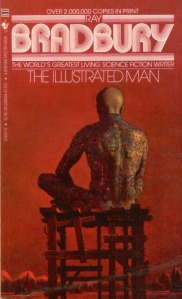John Scalzi’s Old Man’s War (2005) is his first published novel. Its universe currently has three other books in it and a movie, directed by Wolfgang Petersen, is set to come out in 2012.
The plot starts as follows: On his 75th birthday, John Perry (the main character) visits his wife’s grave and joins the Colonial Defense Forces as a recrui– Oh hell, I’ll just quote the back cover; it actually describes the book in question:
John Perry did two things on his 75th birthday. First he visited his wife’s grave. Then he joined the army.
The good news is that humanity finally made it into interstellar space. The bad news is that planets fit to live on are scarce-and aliens willing to fight for them are common. The universe, it turns out, is a hostile place.
So: we fight. To defend Earth (a target for our new enemies, should we let them get close enough) and to stake our own claim to planetary real estate. Far from Earth, the war has gone on for decades: brutal, bloody, unyielding.
Earth itself is a backwater. The bulk of humanity’s resources are in the hands of the Colonial Defense Force, which shields the home planet from too much knowledge of the situation. What’s known to everybody is that when you reach retirement age, you can join the CDF. They don’t want young people; they want people who carry the knowledge and skills of decades of living. You’ll be taken off Earth and never allowed to return. You’ll serve your time at the front. And if you survive, you’ll be given a generous homestead stake of your own, on one of our hard-won colony planets.
John Perry is taking that deal. He has only the vaguest idea what to expect. Because the actual fight, light-years from home, is far, far harder than he can imagine-and what he will become is far stranger.
So, you say, apart from the downright miraculous fact that the blurb writer actually read the book, what do you think, Ms Reviewer? I don’t see much of an opinion here.
Well, your wish is my command: This book is friggin’ excellent. (Despite the fact that it is written in first person.) Seriously, words can’t express how well thought out it is. Read it. Now.
All right, all right, the blurb isn’t really all that exciting. However, the really interesting, this-is-what-I-read-it-for stuff is all spoilery, so I cannot enhance your knowledge of the book without taking away some of its shine. Let it just be said that Mr. Scalzi is going on my keep-track list.


